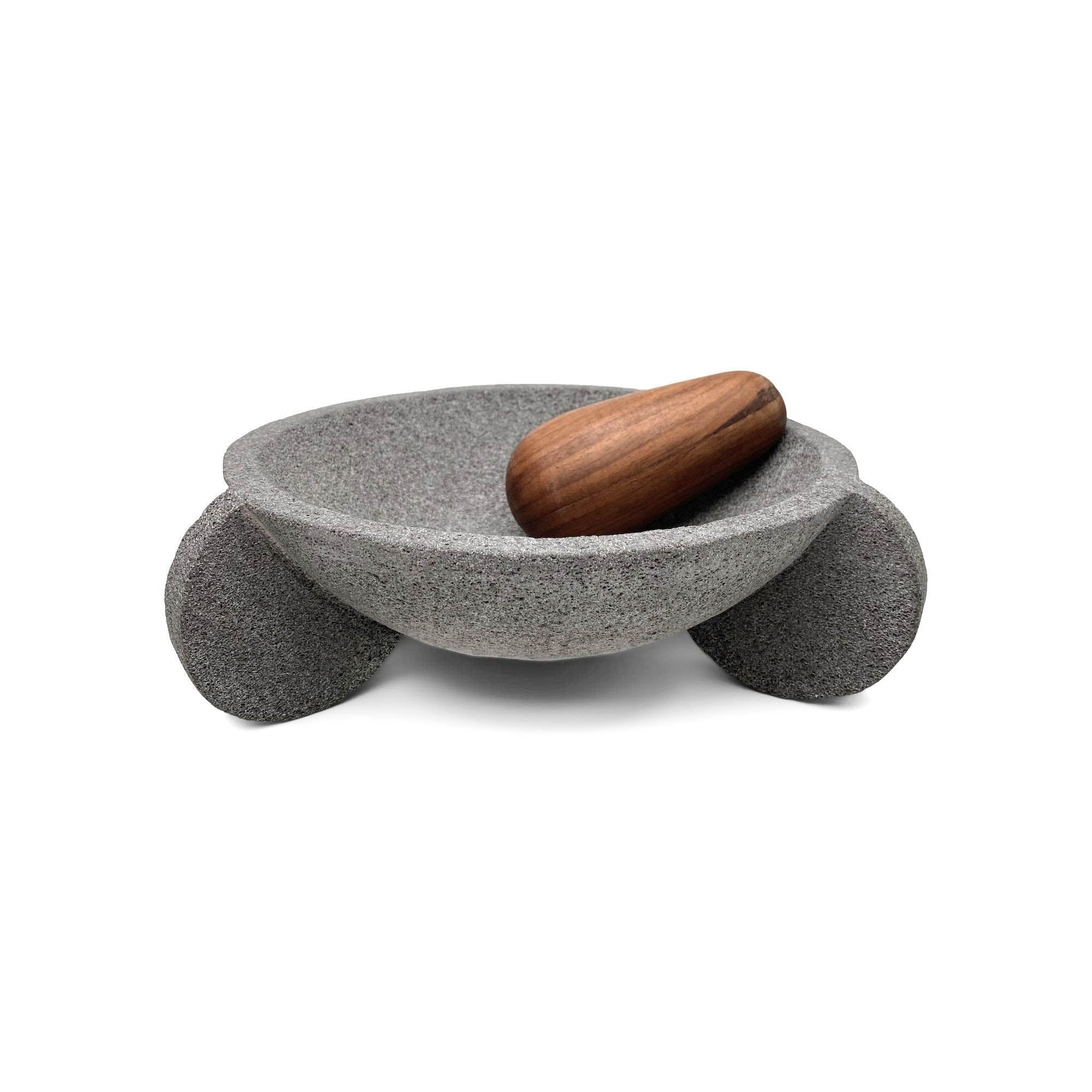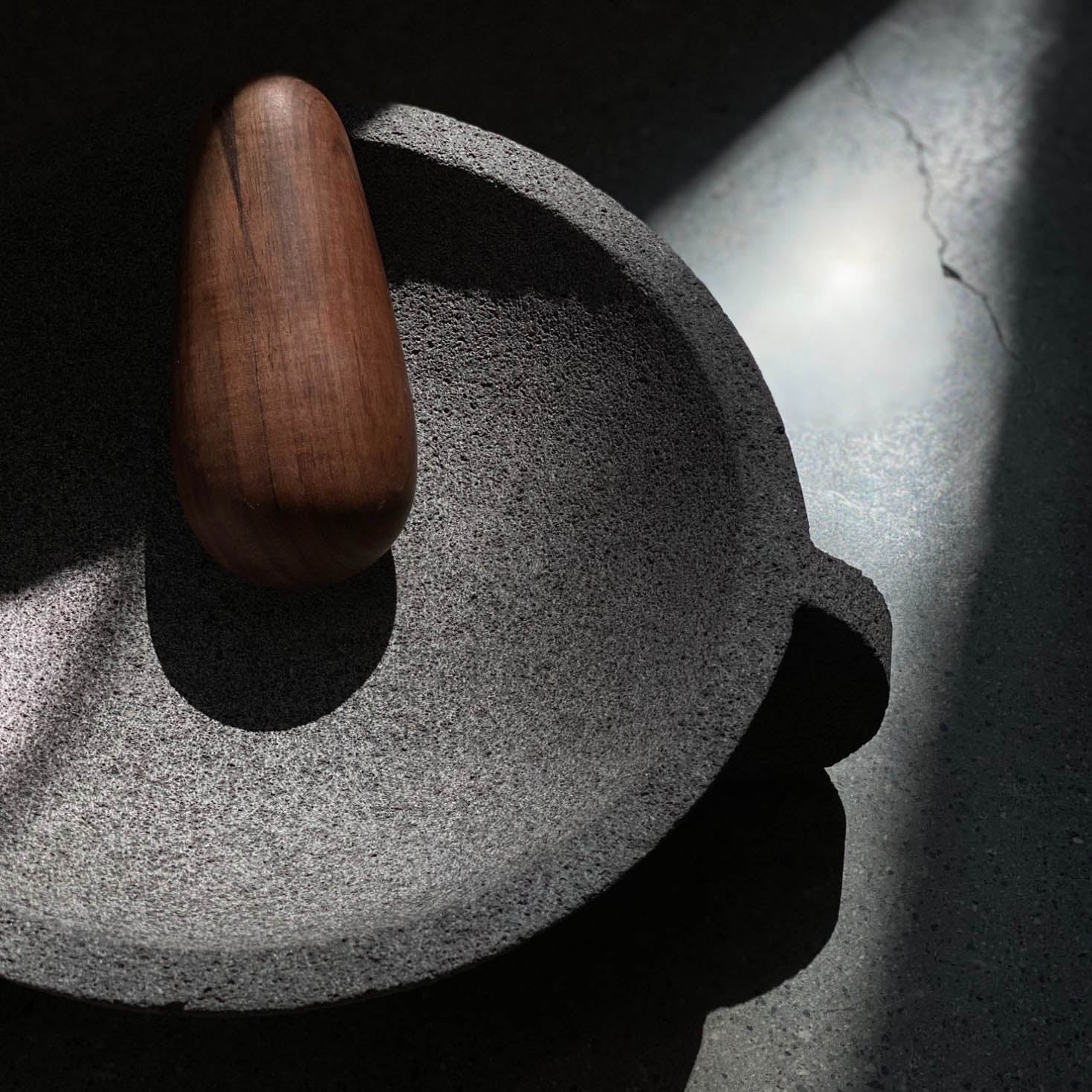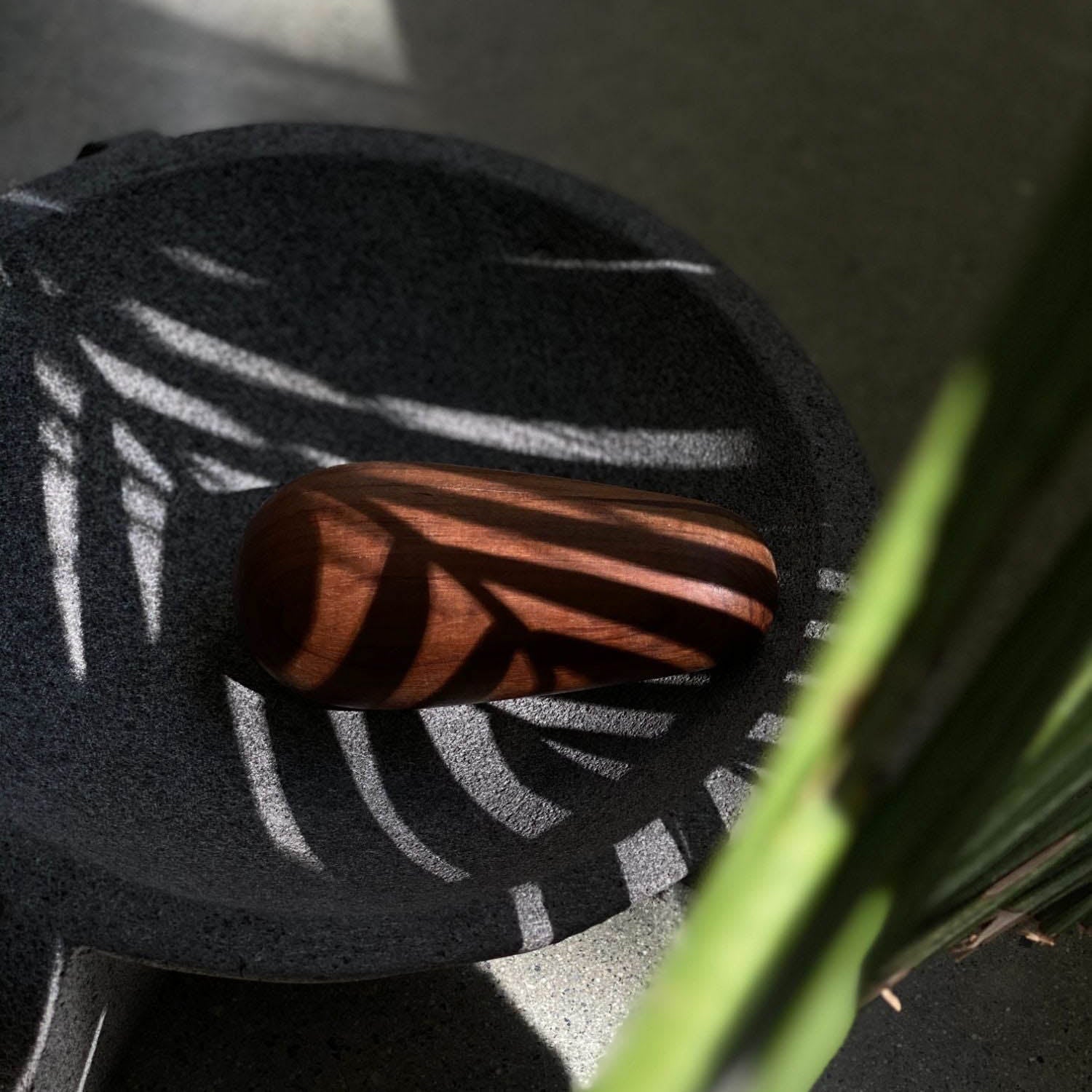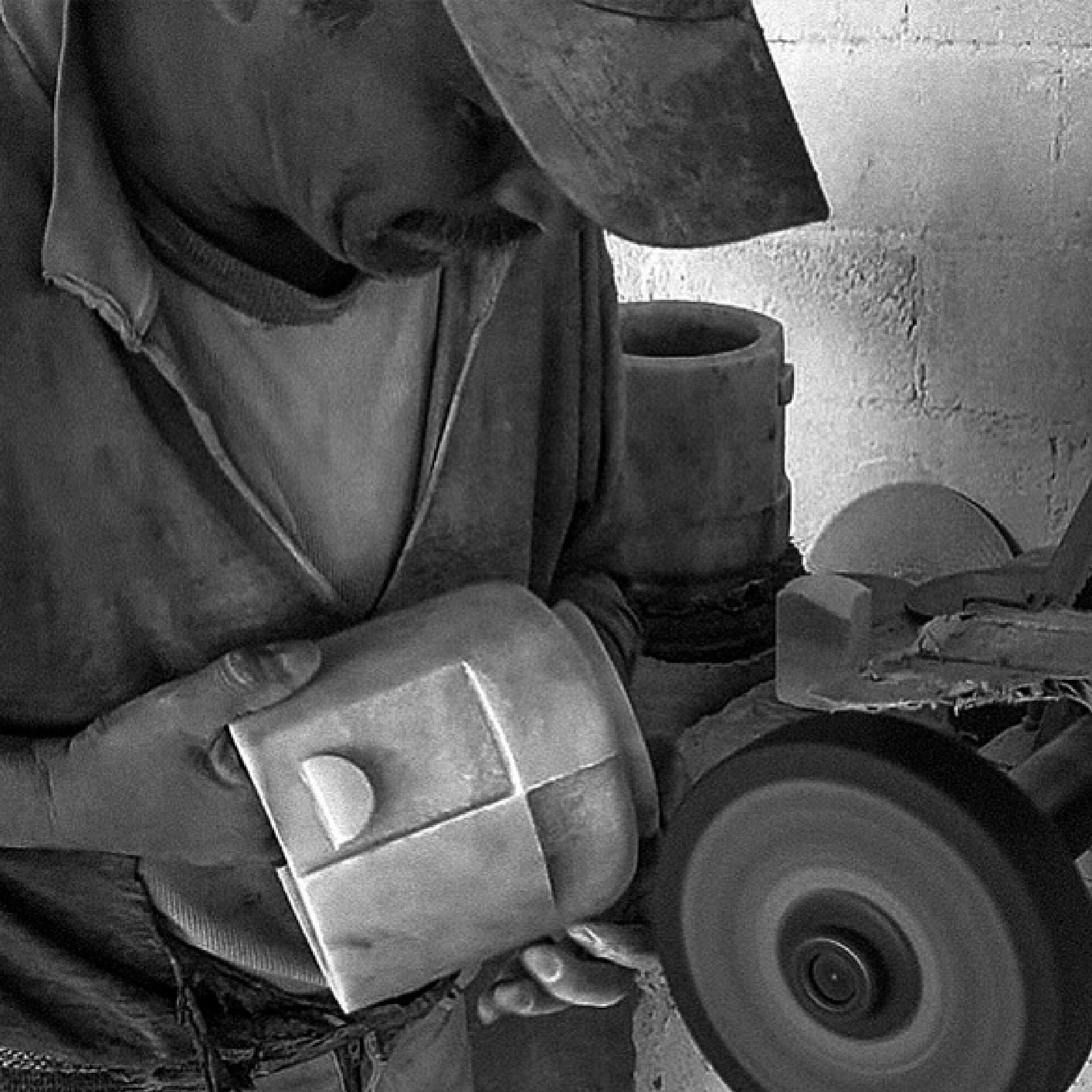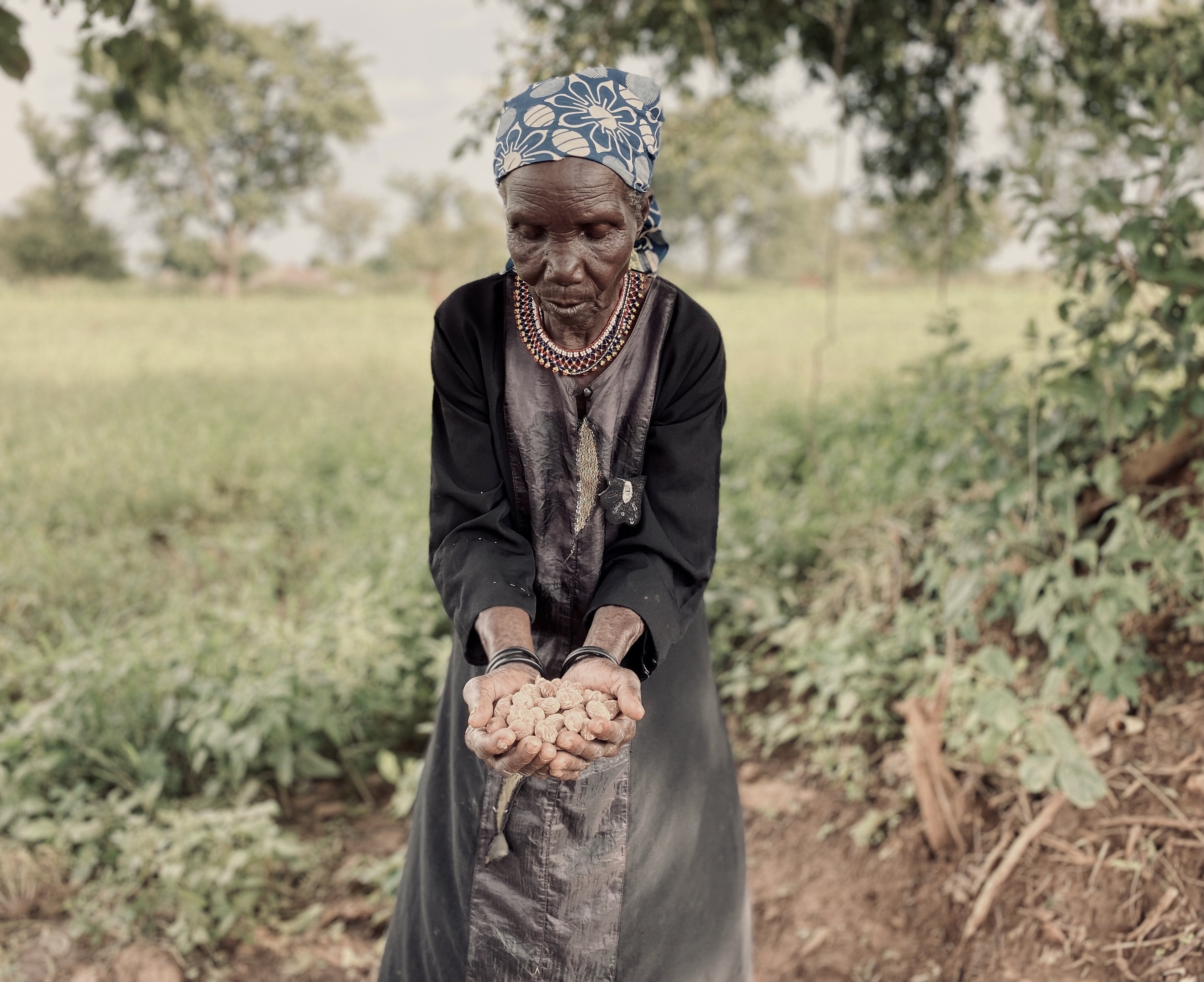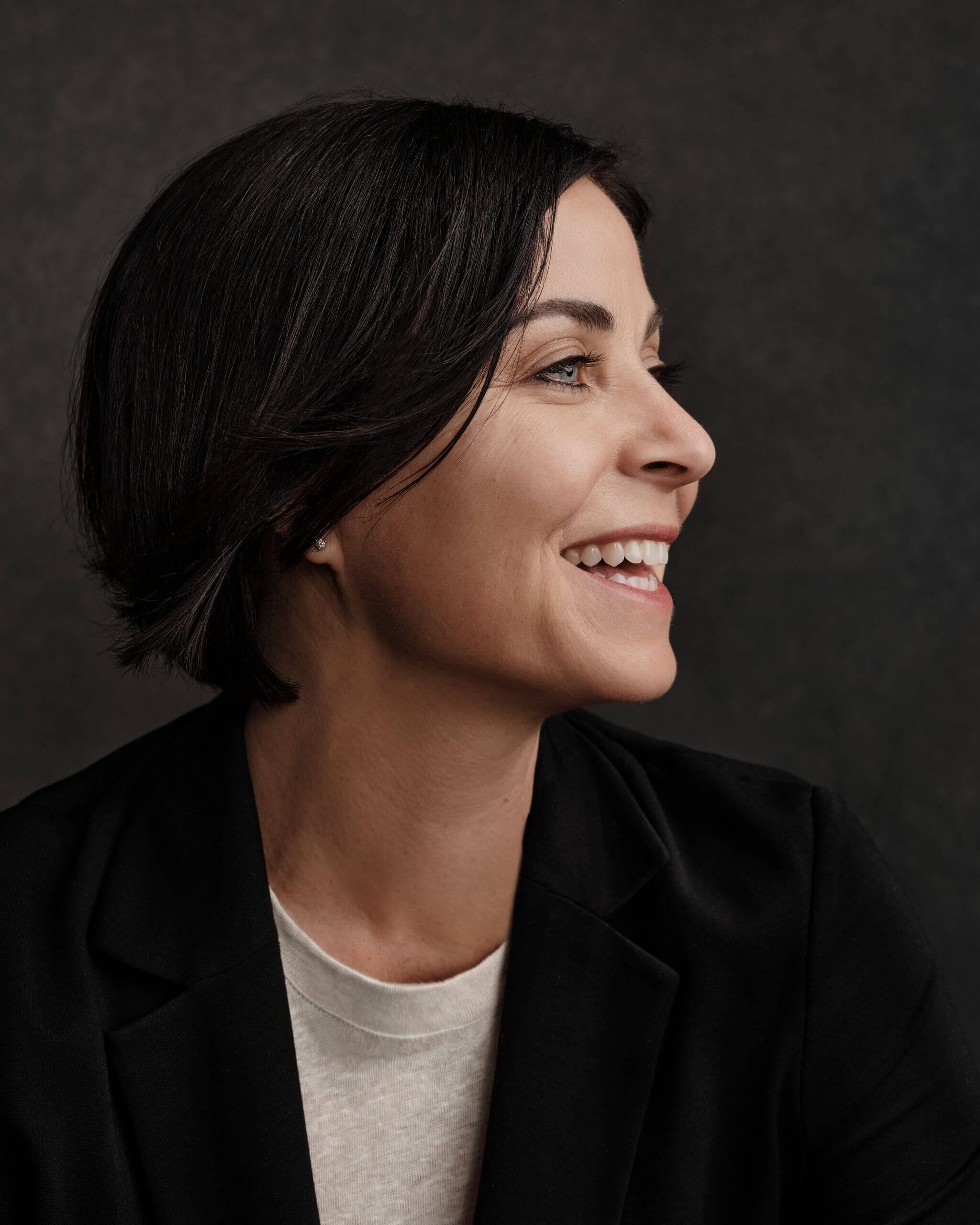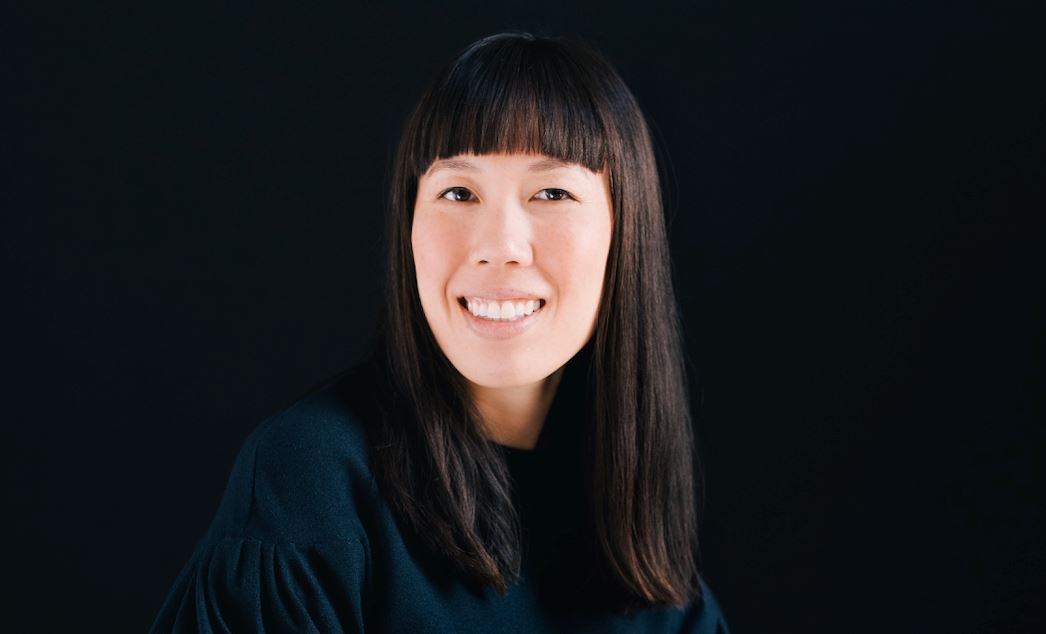Designer Interview Series: Falken Reynolds

Falken Reynolds Interiors is a leading Vancouver Design firm and is the creation of Chad Falkenberg and Kelly Reynolds. These two magnanimous designers are featured in our inaugural piece for our new Designer Interview Series.
Follow along as they explain why they avoid jumping on the latest ‘colour of the year’ trends, and why they love our Mexican lava stone home goods.

OBAKKI
Let’s talk a bit about how you got into design––Where did you grow up? Were you surrounded by good design, and when did design start calling to you?
CHAD
I grew up on a poultry farm east of Edmonton – which was pretty idyllic since I got to spend a lot of time outside and with horses which I rode competitively. I remember quite distinctly when I was 4 years old when my parents met with an architect about building a new house – she had a cardboard model of the house, which I was mesmerized by. I loved spending time in downtown Edmonton when I was growing up, always fascinated by skyscrapers and building many out of Lego. I’ve always been drawn to good design – architecture, furniture, fashion, products, but really started considering it as a career when I was working in Lithuania in the late 1990s and making frequent trips to the Nordic countries.
KELLY
I grew up in Coquitlam and Richmond, a typical suburban upbringing, but I was always longing to be in the city. As soon as I was able to hop on a bus, I was downtown with friends walking amongst the buildings.
Getting back home, I would play with my Girder and Panel building set and recreate the buildings I saw.
I didn’t really think about a career in design until a friend told me I should look into going to a design school. I then enrolled in a course at BCIT and left the school two years later to form my first company.
OBAKKI
How would you describe your distinct style?
FALKEN REYNOLDS
Quiet confidence is something we come back to a lot in our work. While our projects vary in the amount and type of layering the common thread is warmth and clean lines. Even though many of our clients are not seeking minimalism, we use a minimalist approach by constantly asking ourselves how to simplify a detail to give it a balance of being interesting but also working really well with other details in the same space – this is the idea of a detail being quiet, of being able to be discovered maybe not at first glance but over time. We like to push new ideas but we’re always very open to letting go of an idea if it feels forced. That fluidity in the design process gives us a lot of opportunities to seek just the right combination of details for each project.

OBAKKI
Can you tell us a bit about your process?
FALKEN REYNOLDS
Our process is really organic and responds to each client. We’ll fill in the gaps of what the client knows they want and what they are looking to us for guidance. Our Discovery process takes a research approach – finding out all the things that will make for a successful project and a home the client will love for years and years. Then we jump into space planning and ensuring we have all the key functional needs (which we love because it takes a lot of thinking outside the box). We’re always thinking about how the space will feel in the early days, but we hold off on the detailing and more aesthetic considerations until the rest is well underway. That way the details arise out of the design and are authentic and purposeful.
Architecture, fashion and nature then play a huge role in influencing how we visualize this feeling – we’re seeking ways to let form take shape that might not be common – the curve in a handrail might be inspired by the curve of a tree branch, or a bathroom vanity might be inspired by a detail from a Carlo Scarpa building or a window covering detail could come from a stitching detail by Jill Sander.
OBAKKI
What’s your secret power for understanding what clients really want?
FALKEN REYNOLDS
It sounds so simple, but it really just comes down to listening. Of course we ask a lot of questions and explore the reasons behind each item on a client’s wish list, but we also spend a lot of time reading between the lines to seek an understanding of what informs their values – their culture, family, careers, places they travelled to and fallen in love with. Since we’ve both spent a lot of time immersing ourselves in different cultures, through travel and living abroad, we’ve learned that if we pay attention to the subtle uniqueness in each person’s values we can create a home that feels deeply personal, distinctive and most importantly, relevant.

OBAKKI
What are your favourite sustainable materials to work with, and do you believe sustainability is a key element of great design?
FALKEN REYNOLDS
Any natural material that can be used with the least amount of processing is something we get quite excited about. Wood is one of those that is truly sustainable as long as forests are managed properly and transparently. Wool and linen are two go-to fibres for fabrics for the same reasons – they are renewable, long lasting, they can develop beautiful patinas as they age.
Sustainability is key to any great design, but we are clear-headed that the best, most sustainable design is the one that uses less (material, energy, etc.), lasts longer (stays out of landfills), is repairable (rather than only replaceable) and is useful.
OBAKKI
What trends and colours are you predicting for this fall and winter?
FALKEN REYNOLDS
The biggest trend in the design world currently is to make things better by making better things. When we were in Milan for the Salone del Mobile this past June we noted a big shift from manufacturers releasing new designs, to re-working exiting ones to be produced in a better way. It’s a trend we’re quite excited to see take hold and become widely adopted. We don’t need another chair design – we need the existing designs to be manufactured in more sustainable ways.
Since most people are lucky enough to be on the other side of lock-downs and isolation, the warm saturated post-pandemic colour trend will likely continue through to next spring. While we definitely pay attention to colour trends, we typically try to avoid jumping on the colour-of-the-year band wagon with any items that are intended to last for years or even decades.
OBAKKI
What are your favourite Obakki collections or products? Are there specific artisans whose work speaks to you in a deeper way?
FALKEN REYNOLDS
We love the pieces made from lava stone in Mexico. The deep texture catches light and shadow so uniquely and the robust nature of the stone is so satisfying to touch and hold. And while natural stone is not renewable, it takes less processing than man made materials.
Teya Bowl
Tecali Mortar and Pestle
OBAKKI
Who is your favourite designer?
FALKEN REYNOLDS
Oh, that’s a really hard one since the list is incredibly long! We have so much admiration for Sebastian Herkner and how he approaches his work as an industrial designer. Of course, John Pawson, Joseph Dirand, Patricia Urquiola, Jamie Hayon, Naoto Fukasawa, Barber & Osbergy, Dieter Rames, Philippe Malouin, Jasper Morison, the Bouroulec Brothers, Kengo Kuma… We could fill pages and pages...
OBAKKI
Where do you think a great sense of design comes from? Do you need to be born with a design sense to be a ‘great’ designer?
FALKEN REYNOLDS
There probably is some natural inclinations we all have about balance, rhythm, colour, etc. that we might be born with, but our cultures have a much bigger influence on nurturing our understanding and appreciation of style. There are places like Denmark or Italy that put a huge emphasis on good design so they have more schools and institutions that support young designers and the whole design community and industry. That has lead to more manufacturing, which gives young designers more opportunities to learn practical skills as well.
All project photos by Ema Peter. Headshot by Collective You.
SHOP THE STORY
Related Posts
The Problem With Palm Oil
Palm oil production is wiping out ancient forests, endangering wildlife and destroying communities, discover why Obakki’s natural soap collection is palm oil free.
DESIGNER INTERVIEW SERIES: Andrea Rodman
These days, I am definitely inspired by Japanese design more and more; the simplicity and warmth behind their design approach often capture my admiration and inspire me with their approach to joinery and craftsmanship. I am also a big fan of Japandi design, which blends Japanese design influences with Scandinavian design, two of my favourite aesthetics.
DESIGNER INTERVIEW SERIES: Christine Lin
Back in 2014, I made a solo pilgrimage to Naoshima, an island west of Osaka, known for its art. It has amazing museums designed by Tadao Ando, a favorite architect of mine, and there’s various art installations and art houses scattered around the island.











